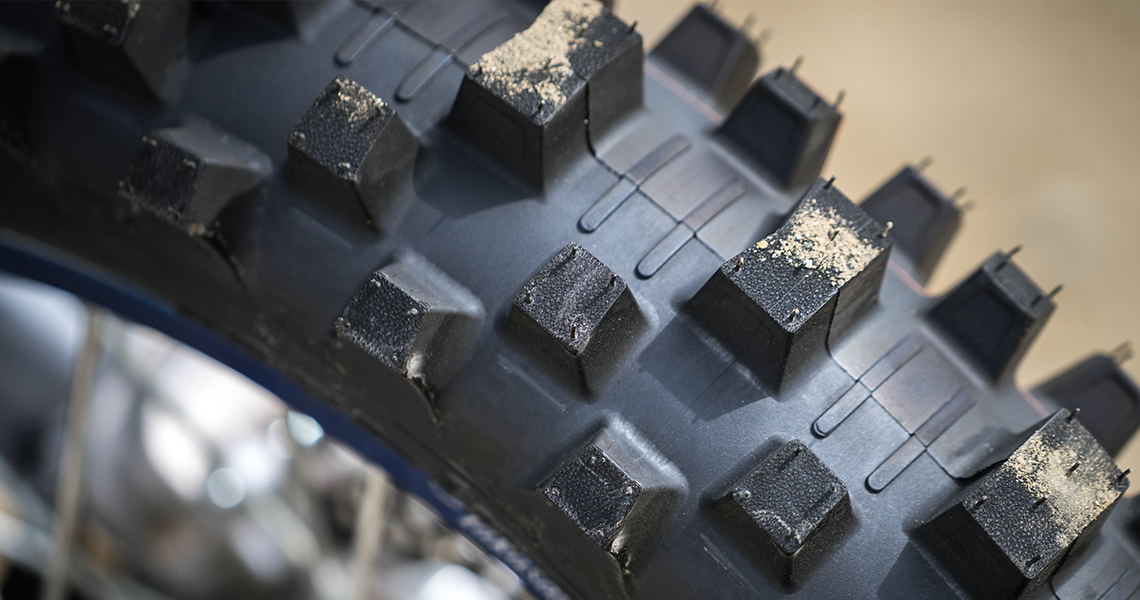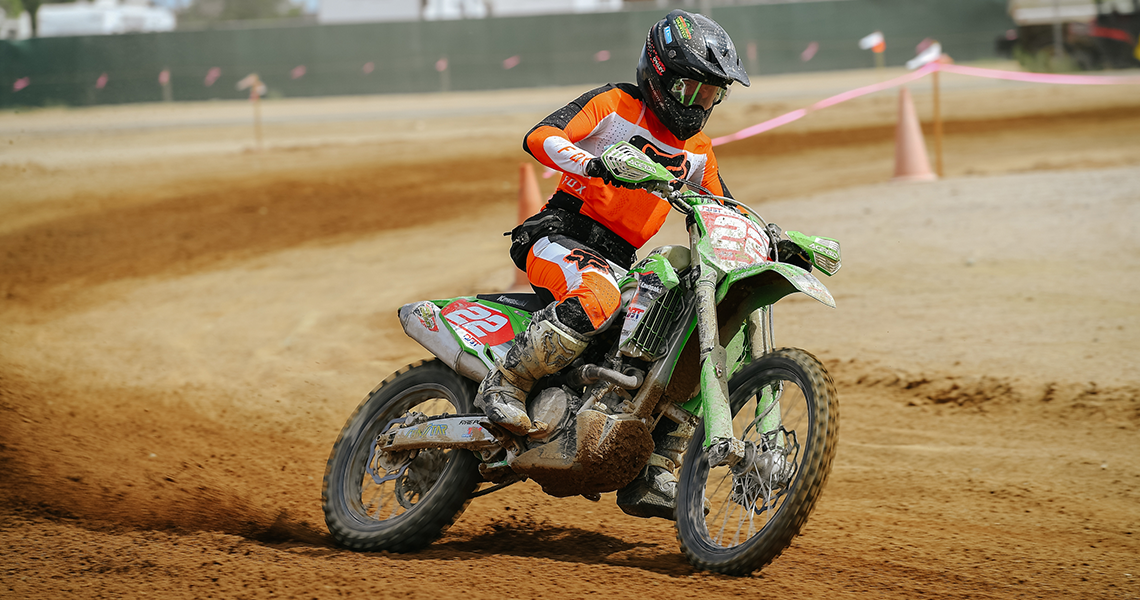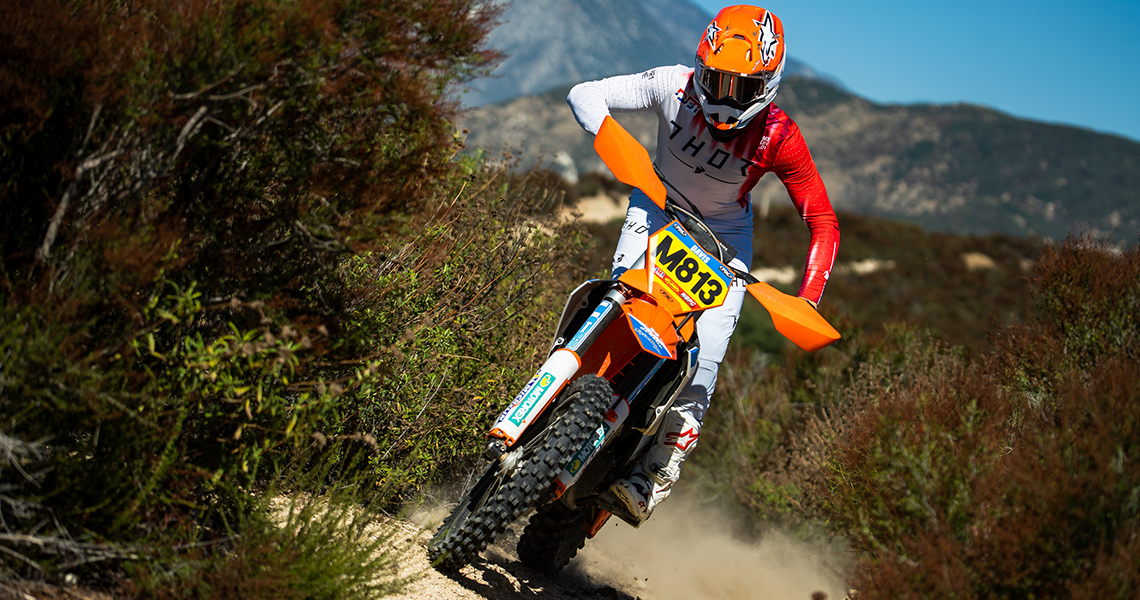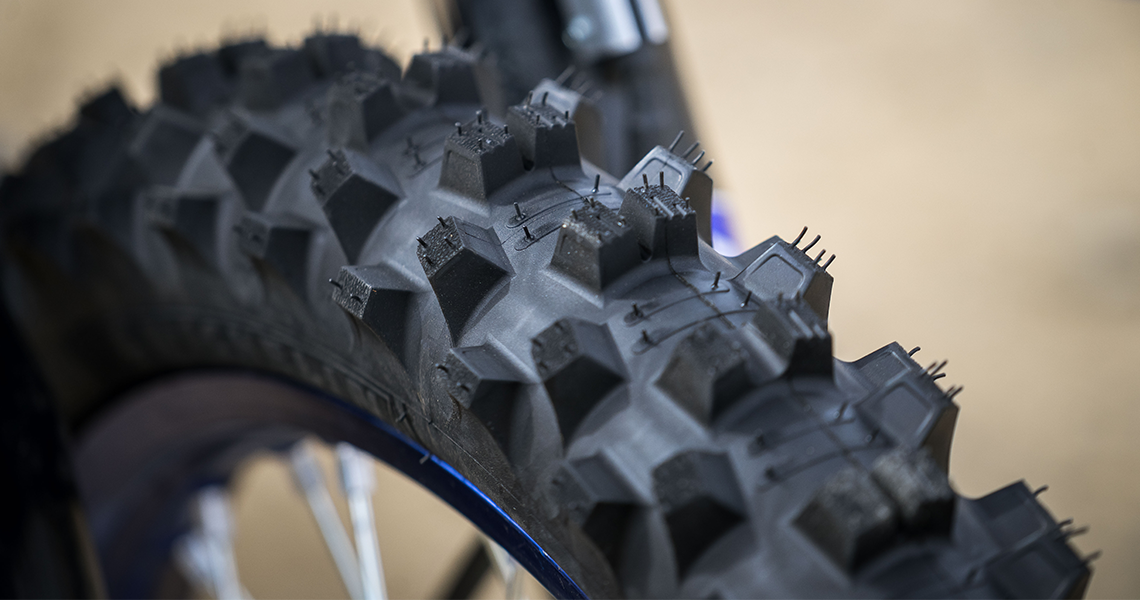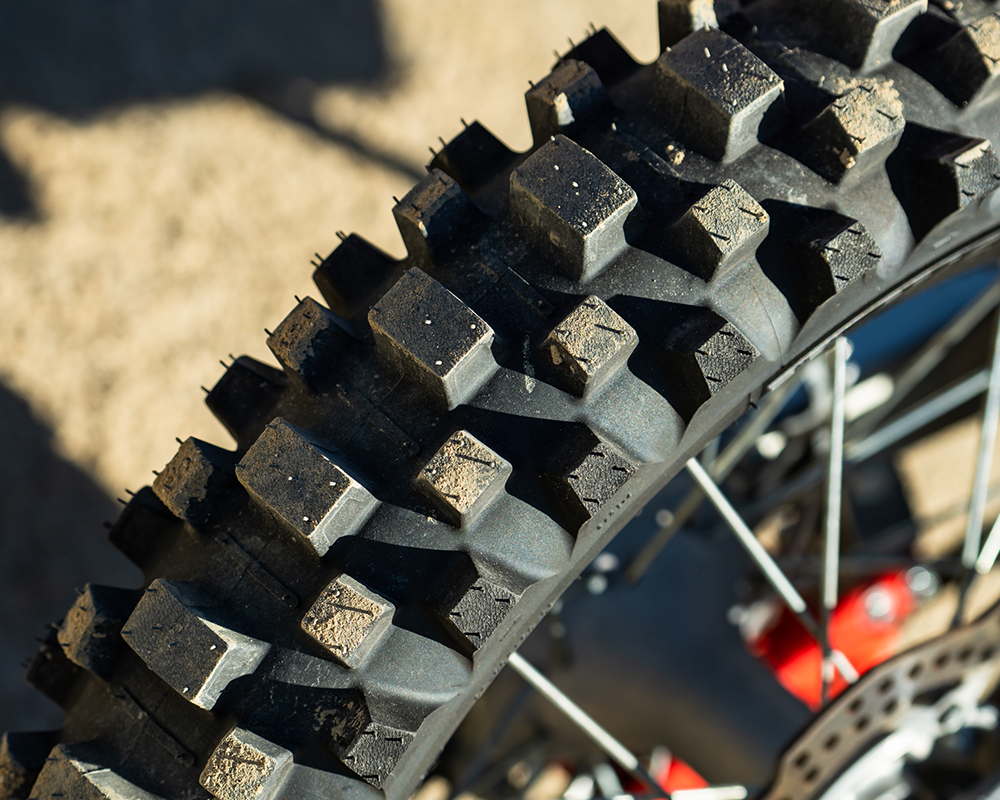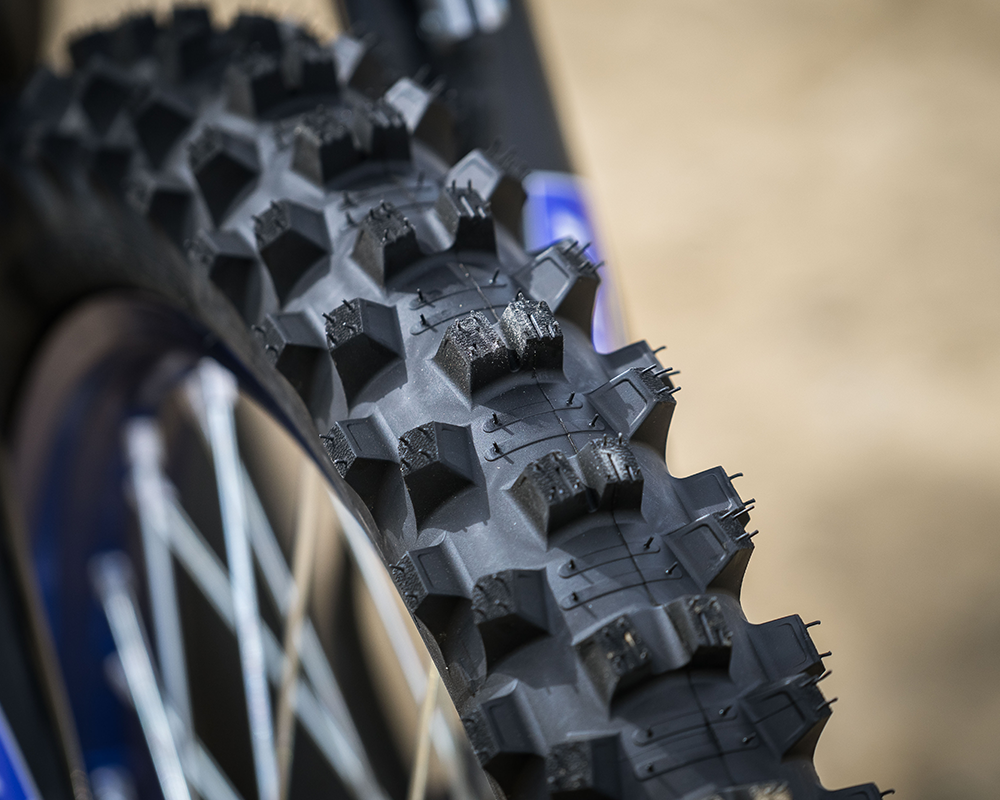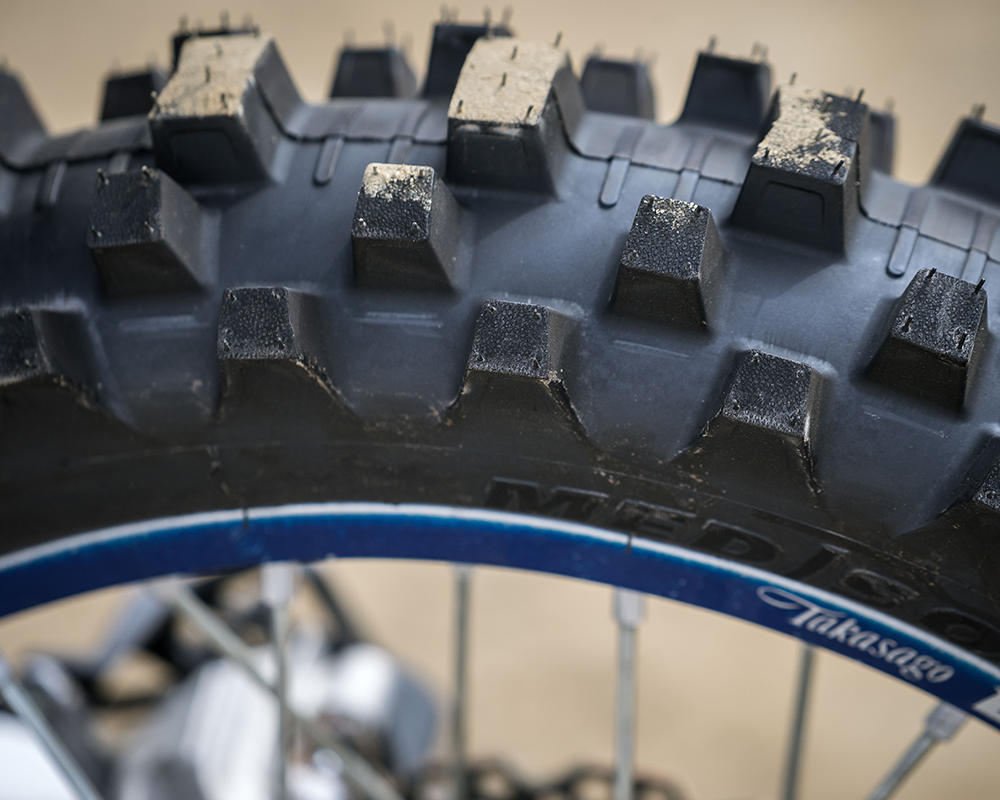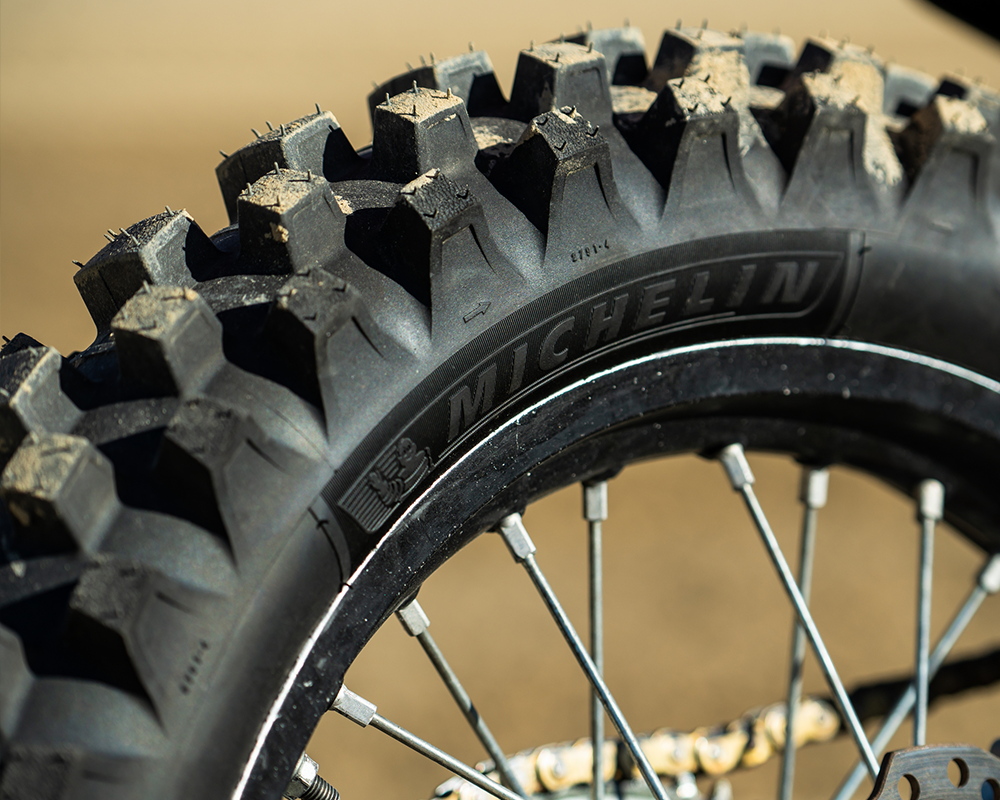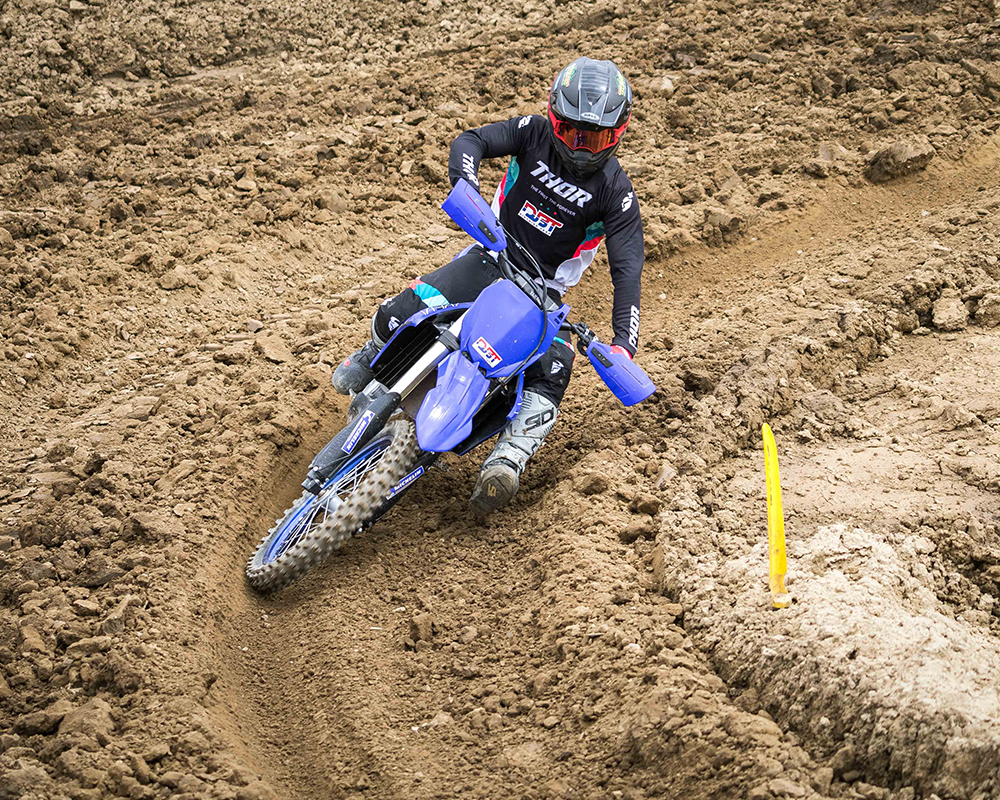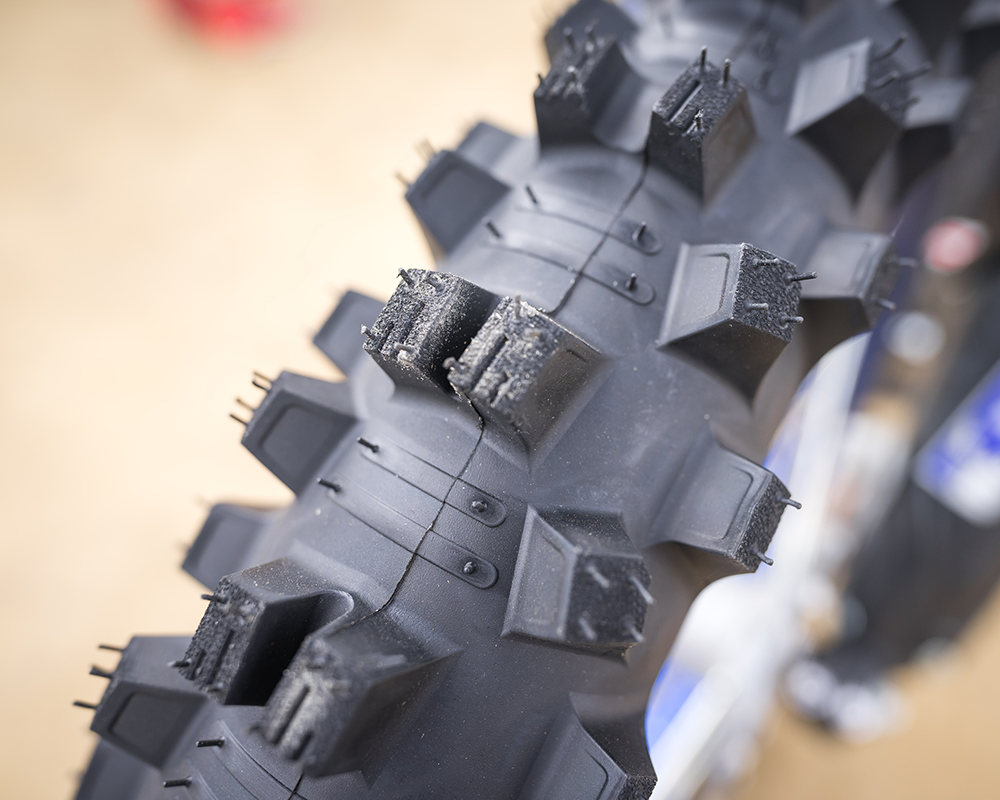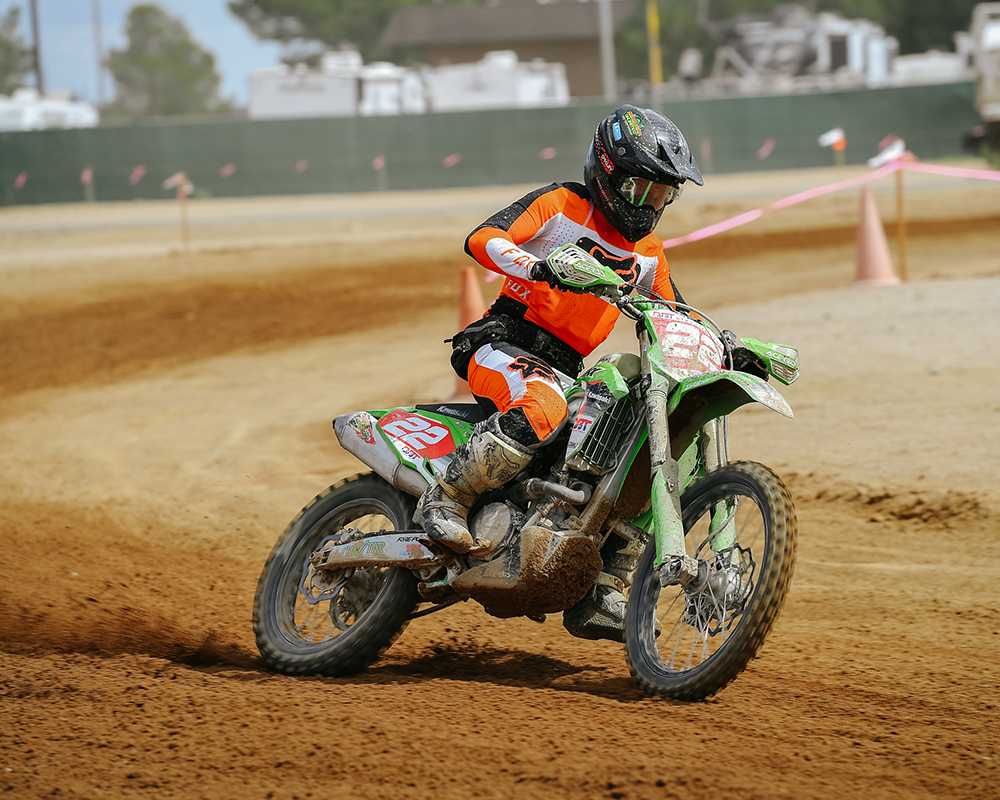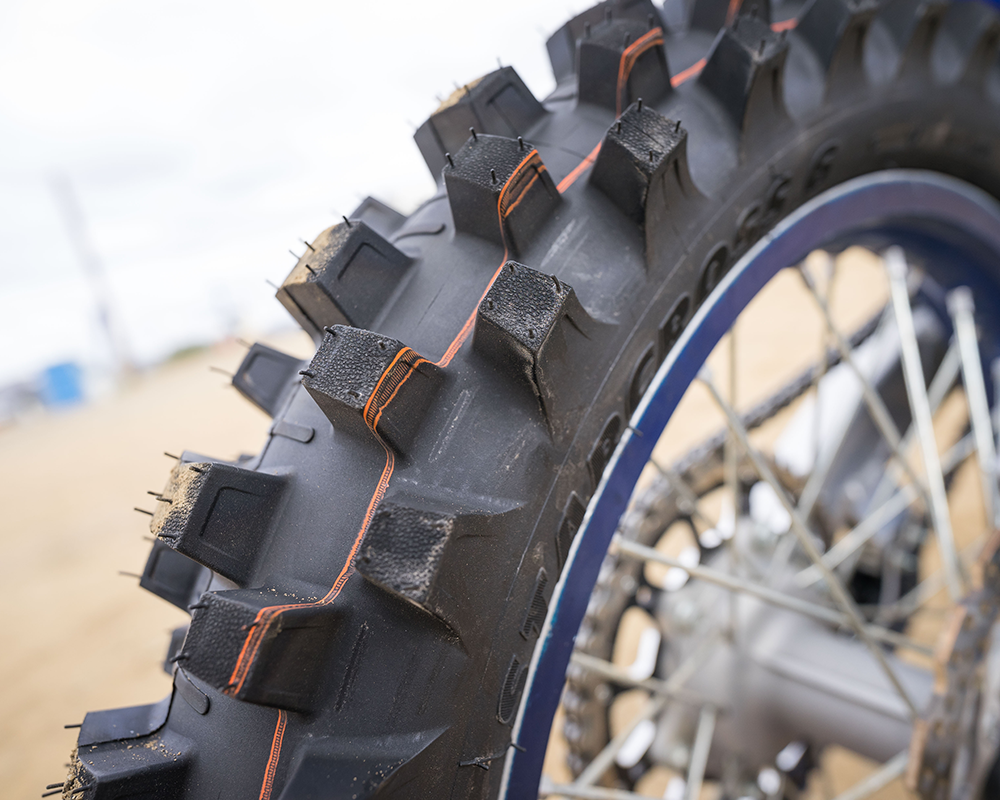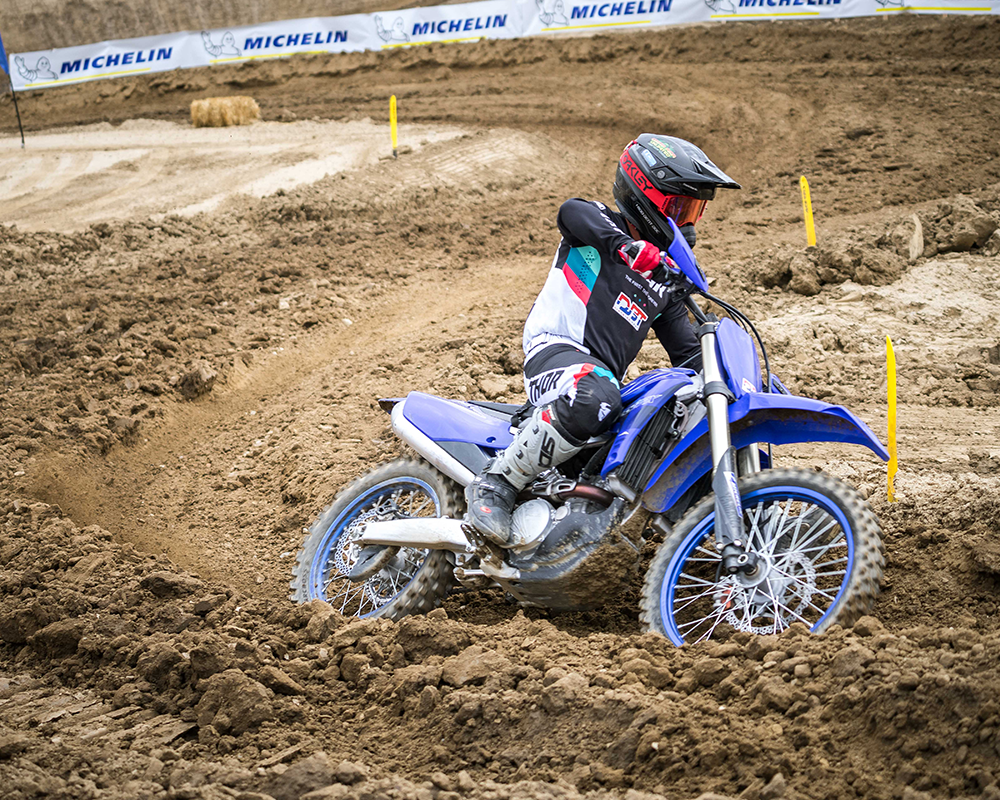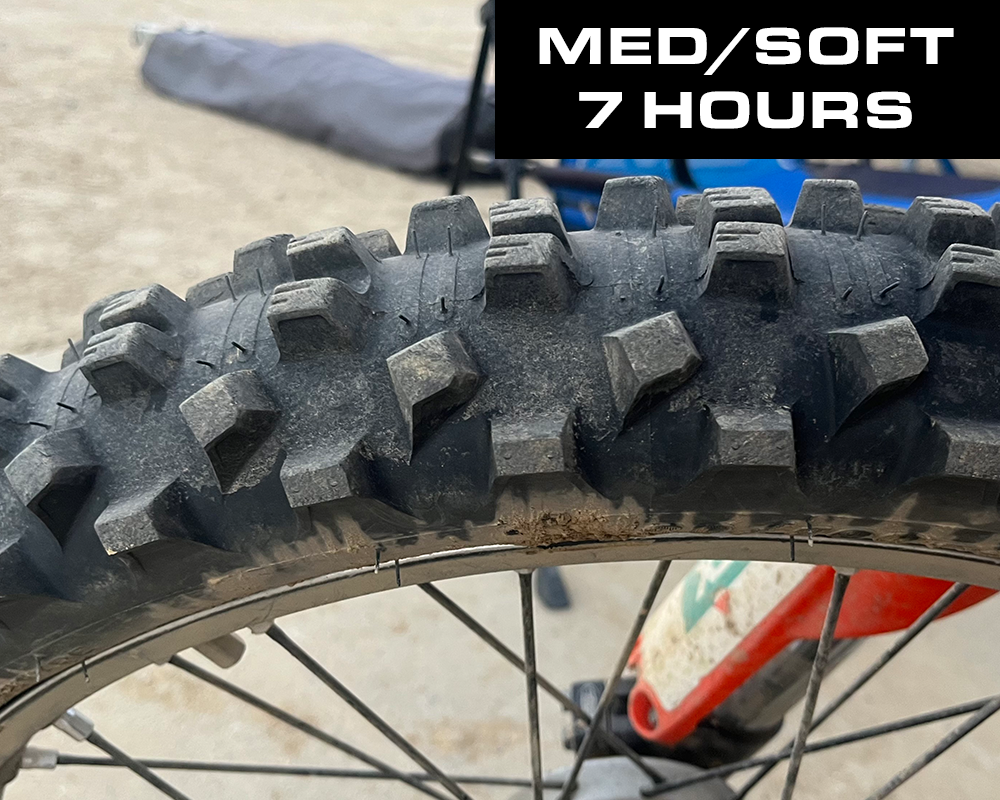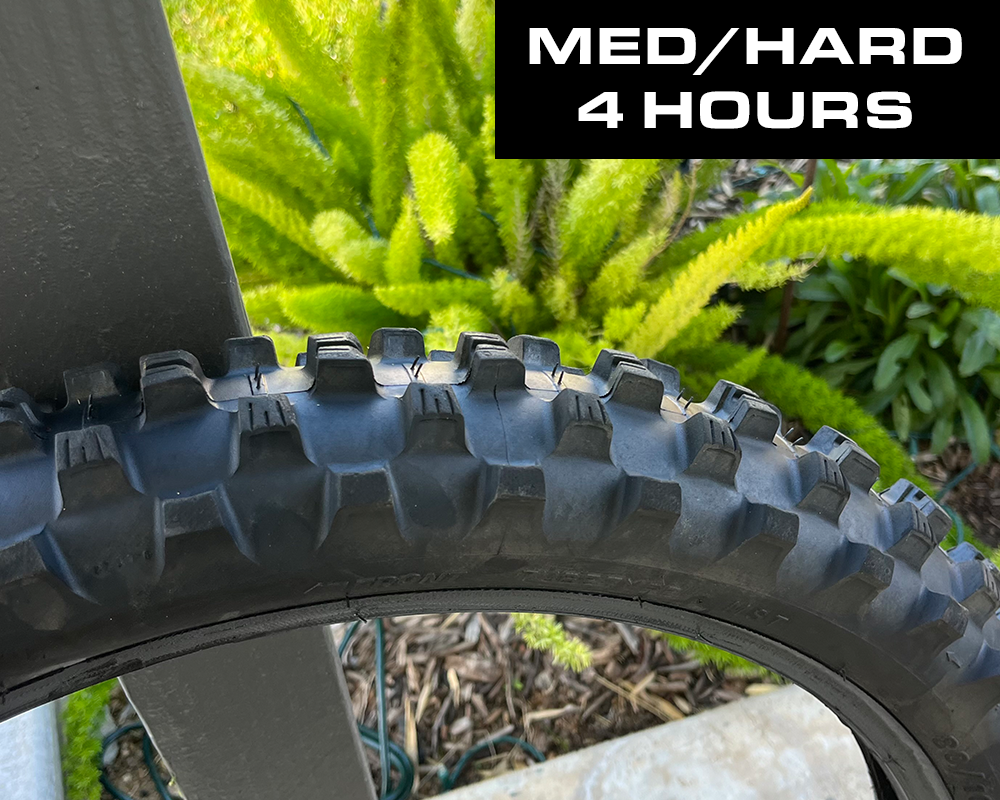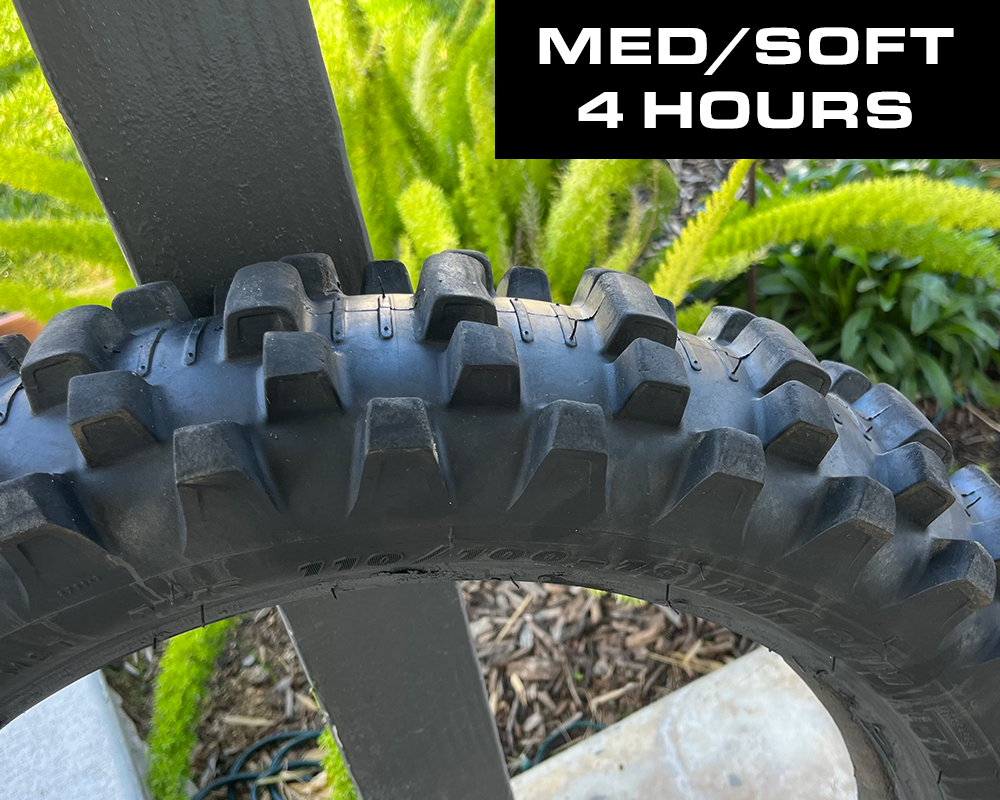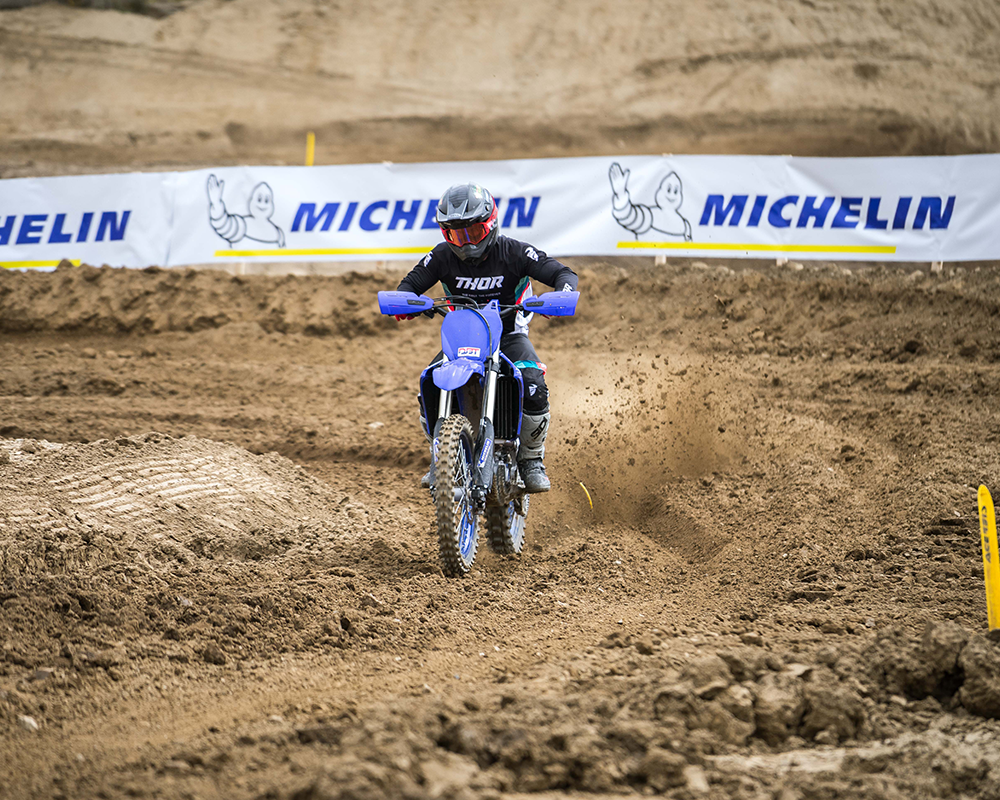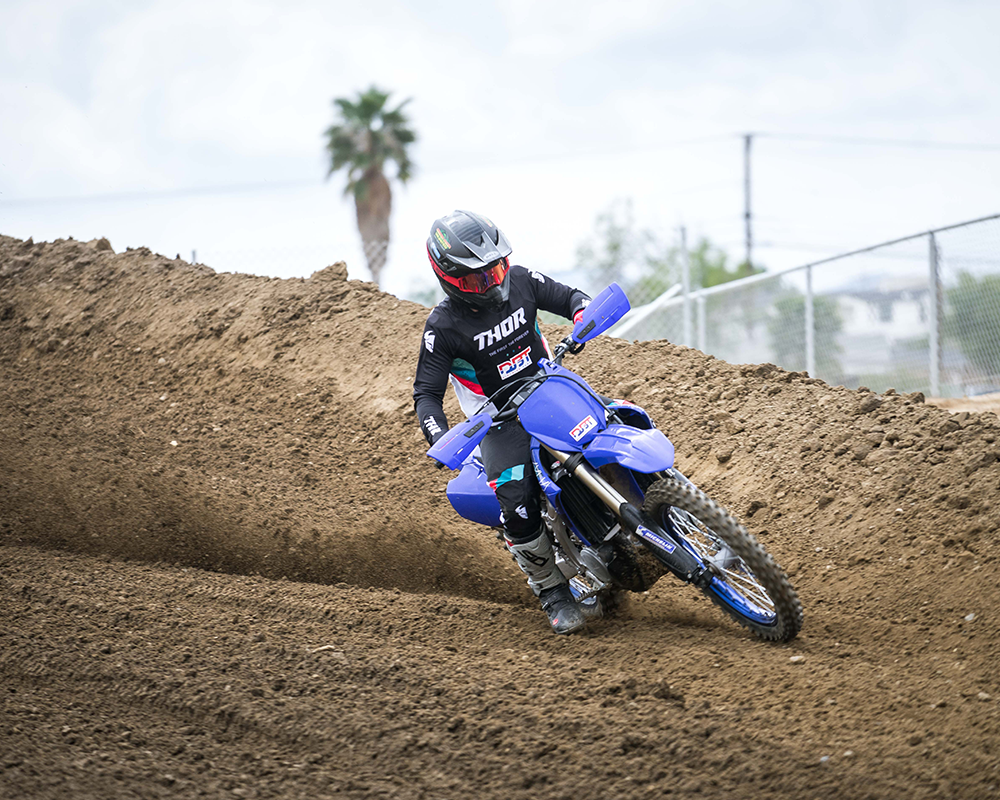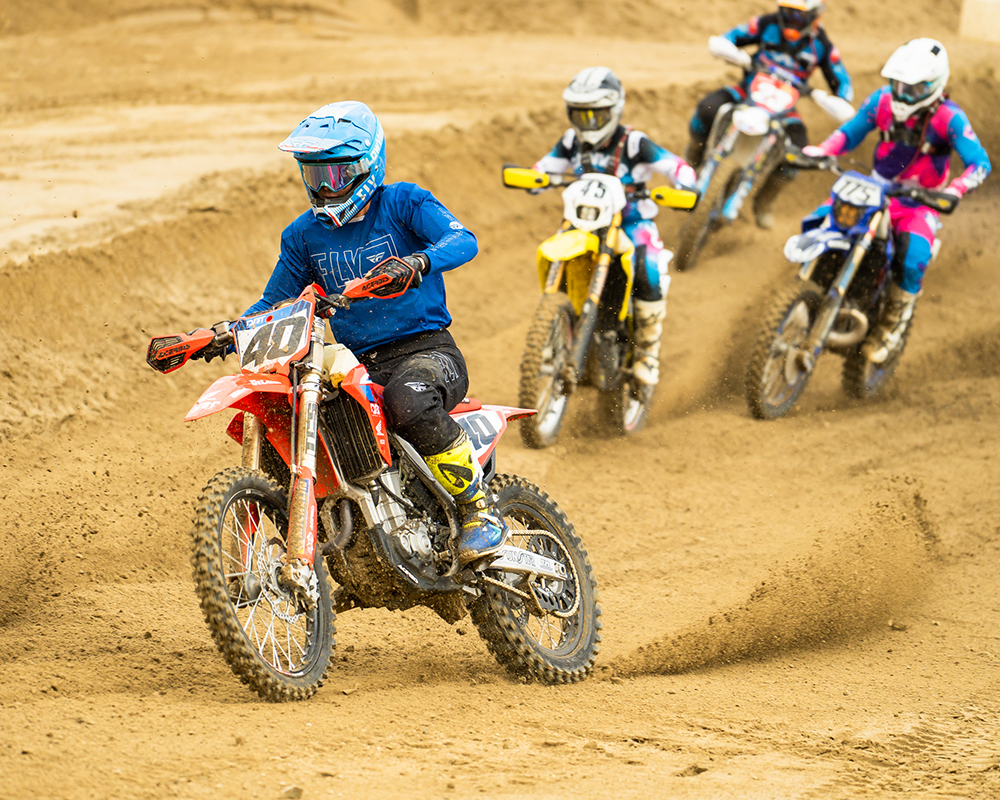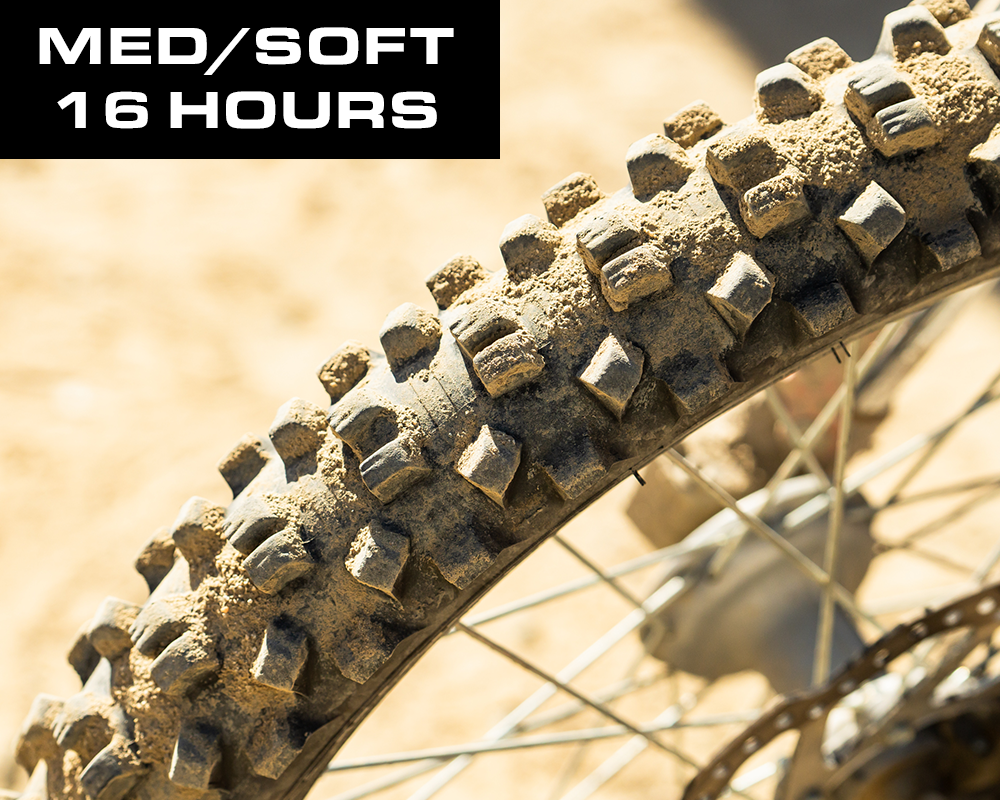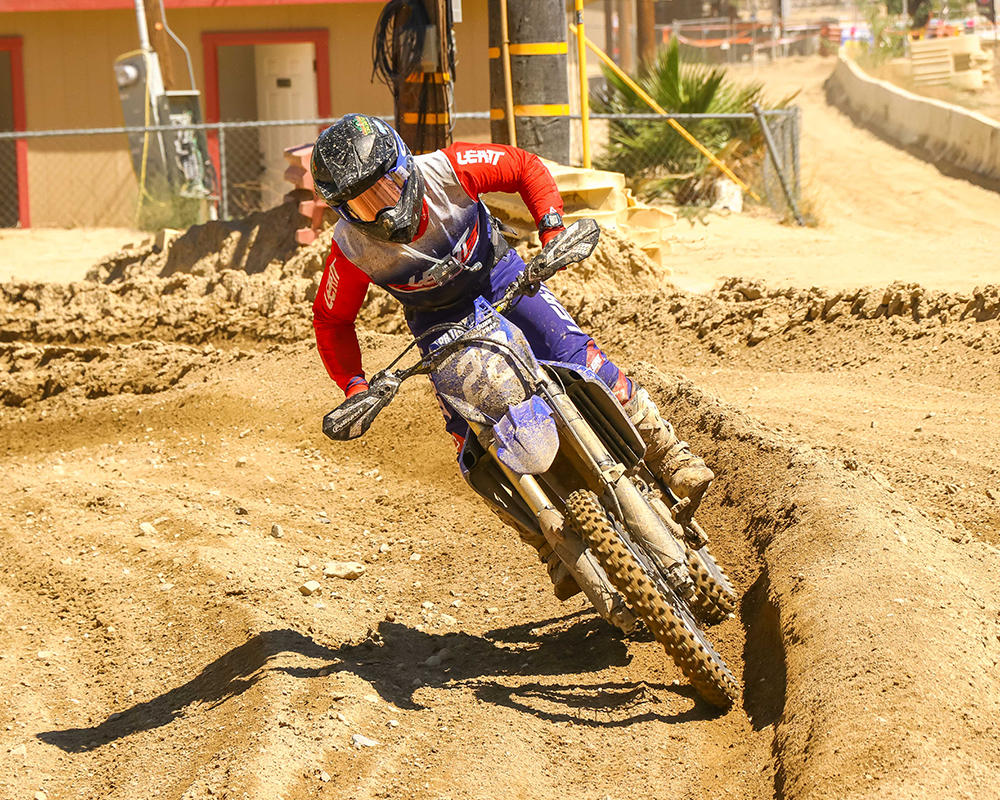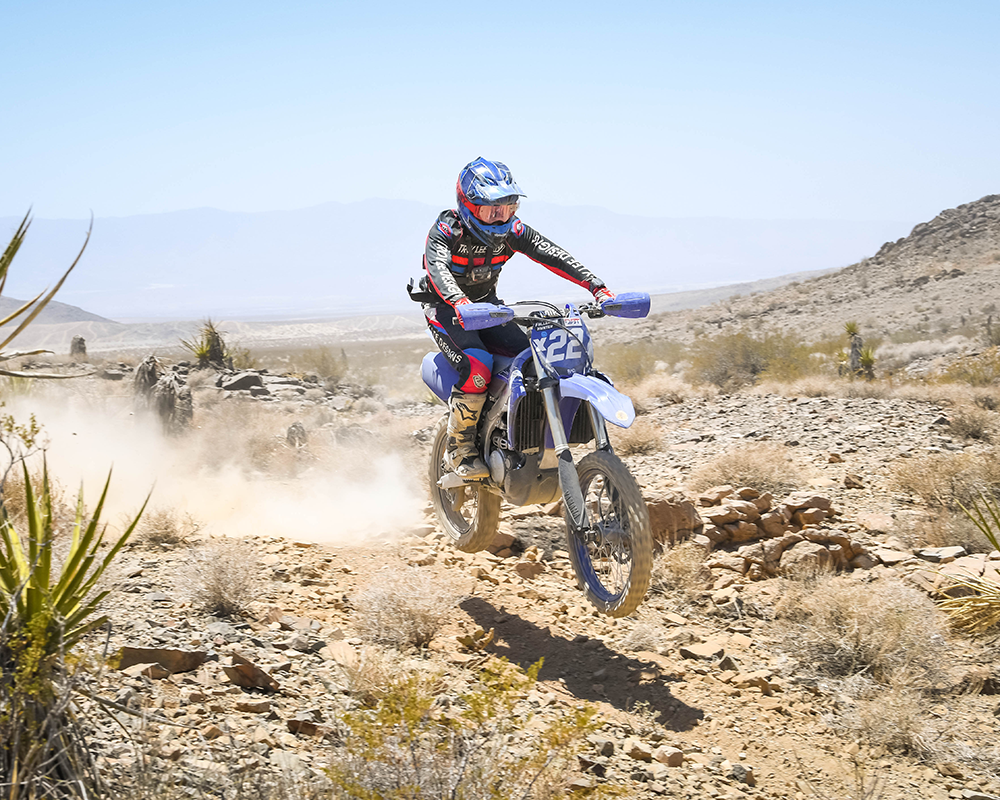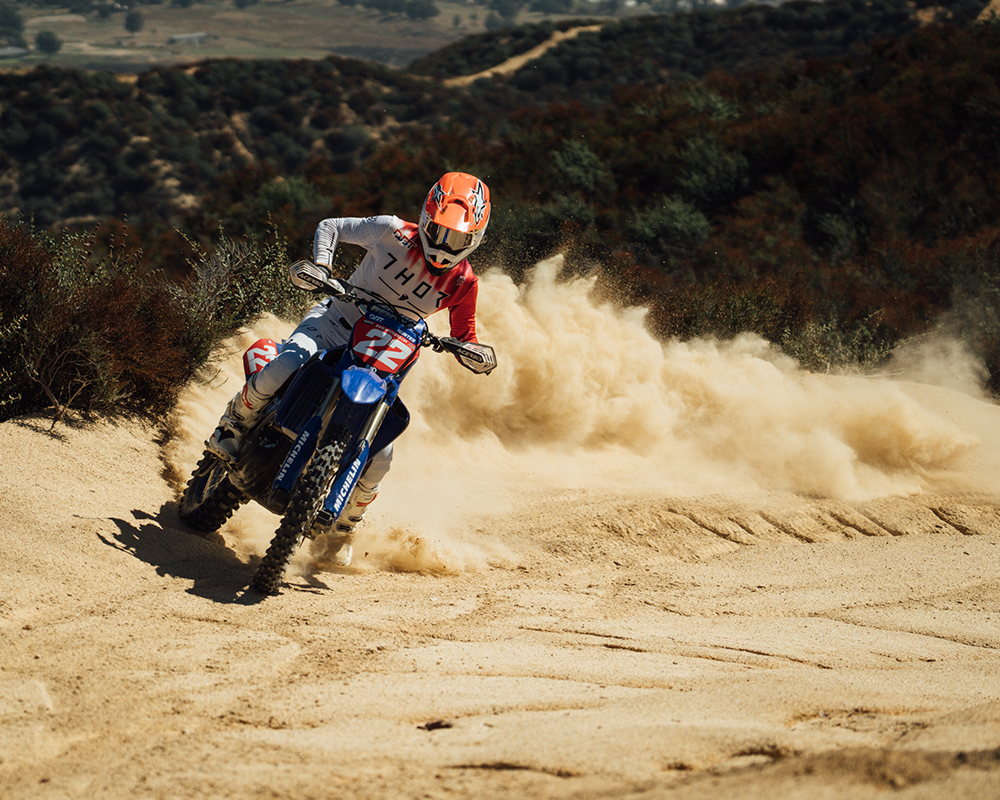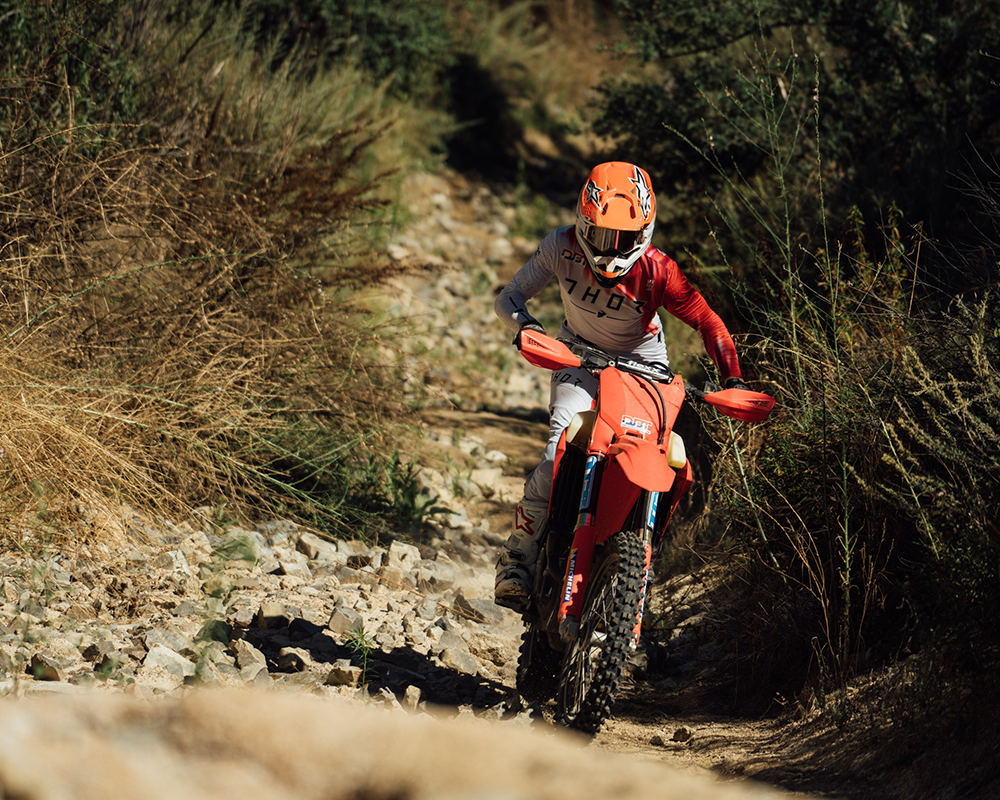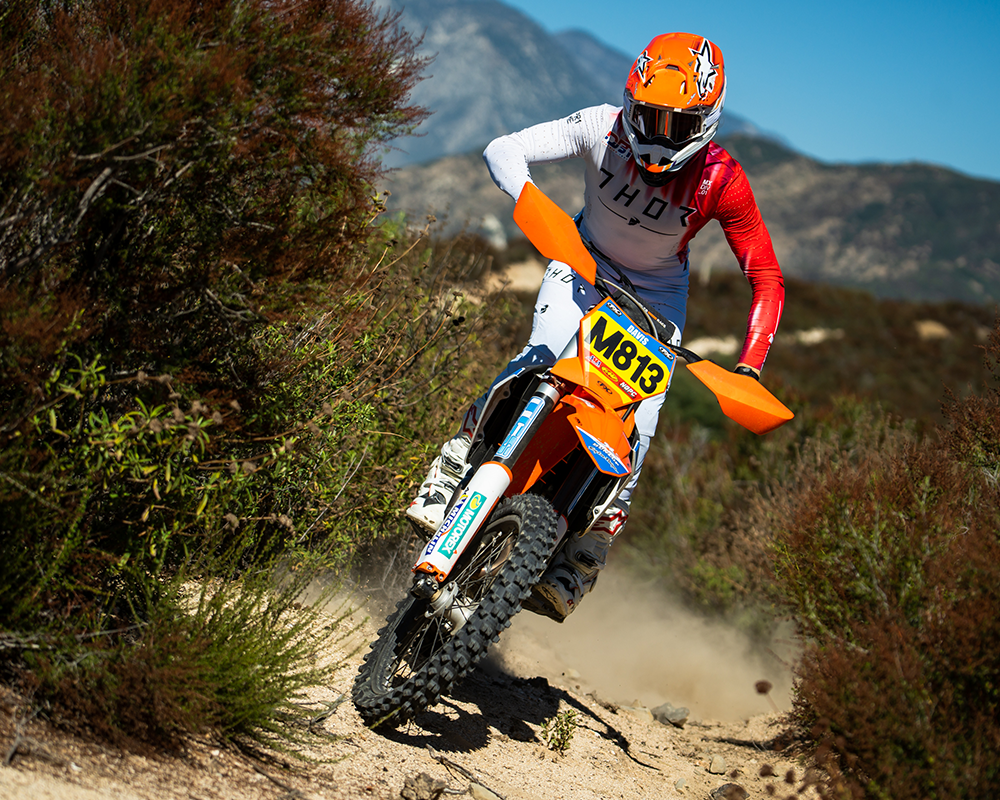Michelin StarCross 6 Tires
Company: Michelin
Price: $133.95+
Additional Pricing
- 80/100-21: $133.95
- 90/100-21: $138.95
- 110/100-18 $144.95
- 110/90-19 $156.95
- 120/80-19 $163.95
- 120/90-18 $152.95
- Improved durability over StarCross 5 tires.
- Lean angle traction is very good.
- Very stable and predicatable under heavy braking.
- Slightly pricier than other tire offerings.
- Bump compliance is stiffer than previous tires.
What it is
- Latest high performance MX/Off-Road tire offering from Michelin.
- Michelin's Silica technology introduced to off-road tires.
- Medium/Soft and Medium/Hard compounds tested.
Michelin has been around the block a time or two, and dating back to 1891, has been manufacturing tires of all shapes and sizes ever since. Today, Michelin doesn’t have the biggest presence in Professional dirt bike racing, that belongs to Dunlop here in the US, but they still put in the effort in the off-road motorcycle segment, and are the official tire supplier of the MotoGP circuit, arguably the highest form of two-wheel racing in the world. Using what they’ve learned in MotoGP, they’ve implemented some new technologies and created the StarCross 6 tire lineup.
The big “improvements” with the StarCross 6 lineup were aimed at improving performance (traction) when the tires are both new and used, while also increasing the durability of the tires. A lot of our testers really liked the performance of the StarCross 5 tires when new, but felt the durability and performance when used wasn’t quite up to par with some competitor tires.
Michelin claims up to 16% improved traction when new, and up to 19% improved traction when used across the range. Durability is claimed to be up 11% over the previous generation StarCross 5 tires. Michelin innovated the use of Silica rubber compounds in street tires, and are now using it in their off-road tires. The Silica is a bonding agent between natural rubber and synthetic rubber, which helps form the tire into what it is. Carbon black is the more traditional method used in this process, but Michelin is a firm believer in the Silica method as they feel it improves both performance and durability.
The tires are available in a variety of sizes, and can be found in local dealers, online at Rocky Mountain ATV/MC, etc with MSRP starting at $133.95+.
How it works
- Tires excel on lean angle more than straight up and down.
- 12.5-13 psi tire pressure.
- Different compounds excel in different terrains.
We’ve been impressed with the performance of Michelin’s tires for years, and the refinements to the StarCross 6 lineup has us feeling no different. For starters, Michelin recommends 13-13.5 psi as a starting point in these tires, but we dropped to as low as ~12-12.5 psi at times when looking for some added bump absorption and compliance out of the tires. Our standard air pressure was usually in the 12.5-13 psi range on most motocross tracks and off-road terrain. We tested both the StarCross 6 Medium/Soft and Medium/Hard compounds on a variety of bikes with different tire sizes, and in different terrains from the desert, to the woods, to MX tracks, and just about everything in between.
Right off the bat, the tires are about average difficulty in terms of mounting (we’ve mounted probably 20-25 tires over the last year, both with tubes and with mousses). They aren’t overly easy to mount like the StarCross 5 tires were (benefits of a softer sidewall on the older tires), but they aren’t overly difficult to mount like a Maxxis Desert IT might be – just average which is easy enough for most riders to change themselves with minimal difficulty.
The tires have a slightly stiffer carcass feeling when straight up and down, especially in comparison to the soft StarCross 5 generation tires. With that, bump absorption isn’t a standout trait on these tires; however, it’s not stiff enough that it really hurts any particularly sensitive bike’s handling performance. In fact, we felt it helped a bike like the CRF450RX, a bike we feel is dependent on the stiffness (or lack of) of its tire’s sidewalls. While it is a tad stiff when vertical, that feeling softens up as the tire is leaned over where it feels as if the sidewall and carcass was designed to be. On edge, the tires maintain a lot of grip in ruts, flat corners, etc. and the stiffer feeling tire goes away as soon as you start to lean the bike over.
In addition, the front tires in particular respond very well to aggressive braking. Unlike most tires, it remains stable, tracks straight and doesn’t want to wash like most tires do – even when leaned over (or unbalanced) slightly. It promotes a lot of confidence in charging hard and braking late. One thing slightly different about these front tires is their name truly does apply to what each tire is designed to do. With most competitor tires, many stick to “mid/soft” tires in all conditions, but we feel these Michelin front tires are a little more specialized and riders will benefit from using the designated tire in the right terrain. It’s not to say that the tires don’t crossover because they do, but you can get a lot of performance benefits out of running the different tires.
The Medium/Soft Rear Tire is our go-to Michelin rear tire for most applications. It offers good grip on acceleration both when leaned over and when vertical, and is very predictable across the board. Under braking, it offers a stable feeling that stays in line, but can be maneuvered with some body english if you desire. As designed, it works best in softer terrain, but when we dip outside of that and into some harder, drier dirt, the tire really doesn’t falter and works as good as any softer terrain MX tire. On lean angle, it continues to offer good grip even in flat corners, and we can be more confident and aggressive with the throttle.
The Medium/Soft Front Tire works very well in its intended soil conditions, but as the dirt dries out and gets edgy, the tire loses some of its grip, especially on edge. We like to think of this tire as the “Glen Helen before noon” tire, whereas the Medium/Hard front tire is the “Glen Helen after noon” tire. However, in standard soft to ~intermediate conditions, this front tire has quickly become one of our favorites. The stability under braking, lean angle traction when cornering in all types of corners, and the predictability in the tire is some of the best. Like we said previously, the bump compliance isn’t great when the tire is vertical, but as it leans over more, the tire comes to its own and offers a great mix of comfort without rolling over.
With the more aggressive side knob bite in the front tires comes the slight tendency to want to climb out of ruts on a motocross track, or in an off-road setting want to hook and grab when riding across rain ruts/rocks, but it was very manageable for our testers to control. We feel the lean angle traction is very positive and more than outweighs the few occasions where the front tire felt overly aggressive in ruts or grabbing in certain situations.
The Medium/Hard Rear Tire is an interesting one. When new, it can hook up and find traction in areas we’ve never had traction in before. However, it does have a tendency to spin up rather quickly and unexpectedly when traction is at a premium and your right wrist isn’t mindful of this. But for the most part, this tire shines in that intermediate to hard terrain and maintains a lot of its good characteristics for the first ~5-6 hours of normal use. Even in softer terrain, the tire performed well enough that we felt comfortable riding it on a soft track in the morning knowing we’d be on hard pack halfway through the day.
We felt the tire’s performance start to lose its edge around the ~6-7 hour mark, where it would have an unexpected release point without much warning under both acceleration and braking in hard packed terrain. Likewise, this tire starts to get vague and loses its predictability under braking in all conditions around the same timeframe. We found this was emphasized when braking through braking bumps and the rear tire isn’t constantly in contact with the ground. When the performance of this tire starts to go, it still looks very good and like it has a lot of life left in it, but looks can be deceiving with this tire in particular. Of the four tires tested, this was the only one we felt durability wasn’t improved over some previous generation tires.
The Medium/Hard Front Tire is a very well-versed tire that adapts to a lot of terrains. This has quickly become one of our go-to tires for all conditions, as it works good when the dirt is soft and has traction, but really starts to shine in comparison to other tires as conditions dry out and harden up. The tire has very good edge grip where most tires don’t in dry and hard conditions, allowing us to maintain some aggression and trust our bike on lean angle when conditions are less than optimal. Likewise, it maintains its braking stability in slick conditions
We’ve put quite a bit of time on both the Medium/Soft and Medium/Hard tires and both have their positives and negatives. In general, we prefer the Medium/Soft rear tire in nearly every condition. The Medium/Hard rear tire works well when new in harder pack terrain, but its performance falls off quicker than we’d like and doesn’t work that much better than the Medium/Soft rear tire. Whereas the Medium/Soft works really well in soft to intermediate terrain, and good in hard pack terrain while maintaining its performance longer. The Medium/Hard front tire is our go-to during the summer months here in California as it responds very well to the drier conditions, but both tires are equally good and have much more positives than negatives. If you’re a rider who is on the edge of your tires (or “out of balance”) more often than not, these tires work really well and adapt to that style of riding the best.
The durability on most of these tires are good – more so with the front than the back. Both front tires hold a level of performance for a very long time, and even exceed what they look like when sitting on the stand. We’ve experienced very little chunking or knobs cracking with either front or rear tires in our time with them. We put a Medium/Soft front tire through the 24 Hours of Glen Helen and only changed it around the 16 hour mark because of a soft mousse, but the tire was still working very well and we felt we could’ve gone the entire race on the single front tire. Likewise, we’ve put in 500+ miles of desert racing on a Medium/Hard front tire and despite it looking pretty ugly, it performed very well all the way down to the last mile of the race. The Medium/Soft rear holds up well and we can get about 9-10 hours comfortably on a MX track, or 8-9 hours in average off-road conditions that aren’t overly rocky. The Medium/Hard rear tire is the only tire that lost its performance rather soon, which was after ~6-7 hours despite it looking really good still.
Michelin has been a world leader in tire manufacturing for over 100 years now, and their current crop of MX/off-road performance tires fit the bill for what you’d expect. The performance of the tires, particularly the front tires, is right up there with the best of them, and the durability is on par to make them a serious contender against the likes of Dunlop, Pirelli, and other premium tire offerings. A few of our testers like these tires so much that they’ve been buying them at full retail prices over their usual tires of choice. And at ~$5-10 more per tire over Dunlop on RMATVMC (click through the link below to shop and support!), they are competitive both on the track and with your wallet.
Rider Opinions
Leave a Reply
